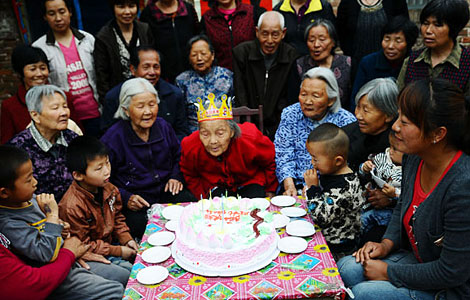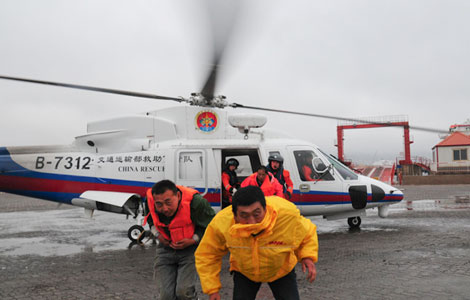
BEIJING - Three years ago, when Peng Fangju, then a salesman in China's southern boomtown of Shenzhen, learned of a job opportunity at Taiwan-headquartered Want Want China's factory in his hometown of Xiantao, he decided to take his chances and move back.
Now Peng, a technician at the mid-sized factory in central China, enjoys decent pay and convenience to look after his aging parents.
"If there is a good job opportunity near home, why bother to venture outside?" he said.
As indicated by new official figures, Peng's return home is reflected in the similar stories of many migrant workers heading back to take advantage of job prospects in fast-developing central and western areas of China.
For decades, millions of Chinese migrant workers from the poorer center and west of China have flooded to the coastal regions of the south and east to seek better pay, helping to fuel these regions' dazzling growth.
But the trend is increasingly reversing thanks to the country's shifting manufacturing footprints.
The National Bureau of Statistics (NBS) revealed on Monday that the number of migrants working in the central and western regions saw relatively fast growth in 2012, up 6 percent and 6.2 percent, respectively, to 47.06 million and 44.79 million, compared with the 2.7-percent gain seen in the east.
The NBS also found the gap between average wages in the east, central and western regions is narrowing, and considering the high living costs along the affluent coast, workers there have less disposable income than those in the inlands, a major reason behind the homecomings.
In recent years, an increasing number of manufacturers such as Want Want China and Foxconn, the world's largest electronics contract manufacturing company and an employer of hundreds of thousands of Chinese workers, have been marching inland to seek lower land and labor costs.
Foxconn has extended its operations to the inner provinces of Hunan, Hubei and Sichuan.
The extra employment brought by them to these areas has offered migrants, excluded by China's "hukou" household registration system from most urban social benefits such as education and healthcare access, an option to head back.
Lin Dongrong, director of Want Want China's company in Xiantao, said many of its 1,700 workers have previously worked in the south and east before settling down in his factory.
Ma Xiaohe, deputy chief of the Academy of Macro-economic Research with the National Development and Reform Commission, pointed out that local governments' policies to woo outside investment are another factor driving the trend.
Eager to catch up with the coastal areas, local authorities in the less developed areas have scrambled to roll out a string of generous policies, including tax breaks and cheap land, to attract investment from far and wide.
Ma characterized the tide as a significant boon to ease the development imbalance in China, provided local authorities attract clusters of industries that are in line with their development strategy and keep upgrading and innovating to boost competitiveness.
"Industries will always move toward places where costs are low. Local authorities should try to enhance their competitiveness to prevent jobs from flowing out to southeastern countries where costs are even lower," he said.
Zhou Hongchun, an analyst with the Development Research Center of the State Council, views the jobs created by the industrial transfers as very important for China's urbanization plan, under which the country is aiming to make 60 percent of its population urban residents by 2020.
"Urbanization is not just about urban status numbers, it is more about whether enough jobs can be created in the cities," he said.







